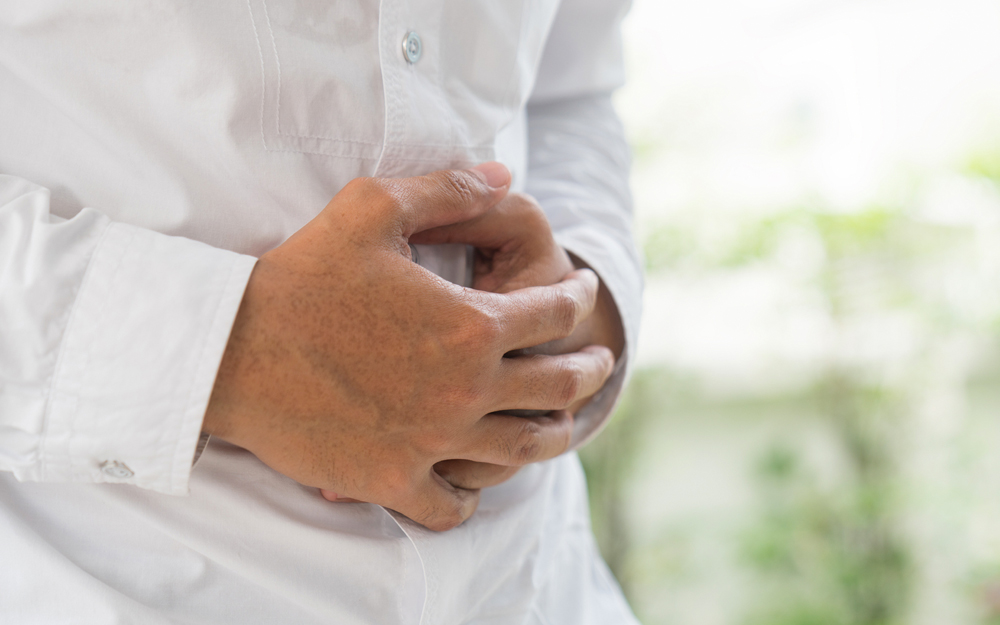Cedars-Sinai Blog
Gallstones Explained
Feb 24, 2020 Cedars-Sinai Staff

You probably don't know much about your gallbladder, but getting to know this small, pear-shaped organ might help you avoid painful gallstones.
Your gallbladder has lots of roles. It lives on the right side of your abdomen and stores and releases the fluid in your liver (called bile). It aids in digestion. It even carries waste products like cholesterol and bilirubin to the appropriate exit channels.
"Unless the stones block a bile duct and cause intense pain, you might not even realize you have them."
But when the system goes awry, these natural bodily components can build up, crystalize, and form stones call gallstones.
"Gallstones form in the gallbladder where they can cause an interesting array of symptoms, from intermittent abdominal pain to excruciating pain on the upper right side of the abdomen," explains Dr. Sadeea Abbasi, a gastroenterologist at the Cedars-Sinai General Gastroenterology Program.
"Unless the stones block a bile duct and cause intense pain, you might not even realize you have them."

Sadeea Q. Abbasi, MD, PhD
Gallstones explained
Gallstones are hardened deposits of digestive fluid that range in size from a grain of sand to a golf ball. There are generally 2 types:
- Cholesterol gallstones: This is the most common type and develops when your liver produces more cholesterol than your bile can dissolve. Over time, the excess cholesterol may form into crystals and sludge, and later into stones.
- Pigment gallstones: These dark brown or black stones form when your body has too much bilirubin (a chemical that's produced when your body breaks down red blood cells). Conditions that are associated with excess bilirubin include liver cirrhosis, biliary tract infections, and certain blood disorders.
Gallstones can also form if your gallbladder doesn't empty completely or often enough. In these cases, bile can become very concentrated and contribute to the formation of gallstones.
"If the bile backs up enough, it can cause a potentially life-threatening infection in the biliary system that goes into the liver," says Dr. Abbasi. Gallstones can also get lodged in the pancreatic duct, which can lead to pancreatitis (inflammation of the pancreas).
Gallstones may include a variety of symptoms, including:
Preventing gallstones
Unfortunately, gallstones aren't always easy to prevent.
People who are over 40, especially women, and who are overweight or obese, have an increased risk of developing stones. Other risk factors include diabetes, liver disease, and eating a high-fat, low-fiber diet.
While the formation of gallstones can be difficult to prevent, certain lifestyle strategies can help minimize your risk of forming stones, including:
- Avoiding fatty foods
- Maintaining a healthy weight
- Eating a plant-based, whole foods diet
- Avoiding rapid weight loss
To determine whether you have stones, your doctor will order an ultrasound of your abdomen, which will show the gallbladder along with any stones. The ultrasound can also show if there are any stones in the bile ducts.
If stones are found in the bile duct, your doctor may perform an endoscopic retrograde cholangiopancreatography, or ERCP.
This procedure involves placing a tube into your mouth that goes to the intestinal tract, where the bile duct drains and allows doctors to look for stones and remove them.
Treating gallstones
Not all gallstones require treatment. In fact, up to 80% of people have gallstones and don't even realize it. For the other 20%, gallstones can build up and cause noticeable symptoms.
In these cases, doctors usually recommend gallbladder removal surgery, or cholecystectomy, which reroutes the bile from the liver to the small intestine.
The procedure itself is simple: Your surgeon will pass a narrow tube through your belly that holds instruments, light, and a camera. Then, the surgeon will remove your gallbladder through a second small incision.
You'll usually go home the same day. If you have stones in your bile ducts, your doctor may use ERCP to remove them before or during surgery.
"You can manage just fine without your gallbladder," says Dr. Abbasi. "Some people may have loose stools after it's removed. Others might not be able to tolerate fatty or greasy foods. But the vast majority of people don't even notice that it's gone."



